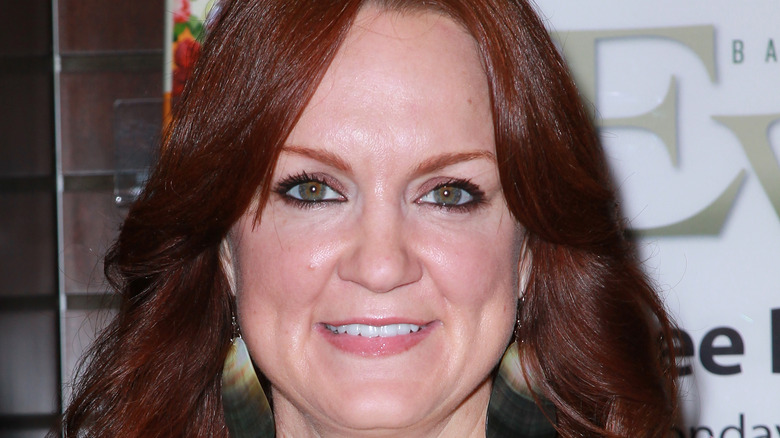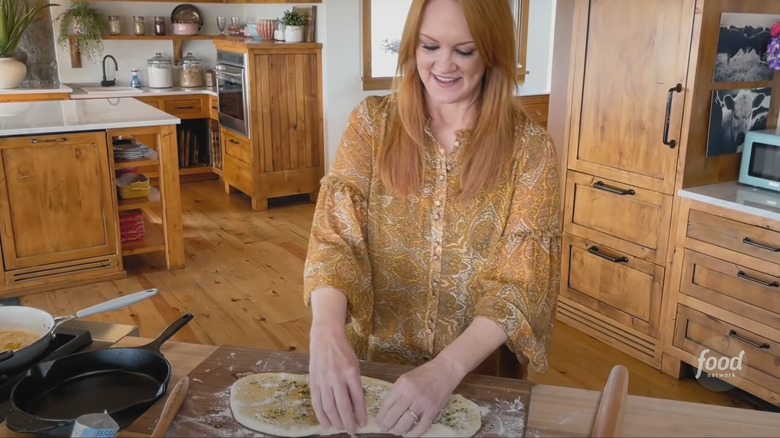Ree Drummond's 'Typewriter Technique' For Rolling Pastry
Whether it be cinnamon rolls, palmiers, or babka, pastries that require any sort of rolling or folding can often be a challenge. The swirl pattern is the essence of these desserts, and without it, they just wouldn't be the same, even if there was nothing wrong with the flavor. The best way to set yourself up for success when making rolled pastries, Taste of Home says, is to first make sure the dough is rolled out to a minimum thickness of 1/4 inch all around. From there it'll be much easier to handle without accidentally tearing a hole in the process.
Unfortunately, an evenly rolled-out dough doesn't necessarily guarantee perfect swirls. If you roll it up a little too tightly, the middle will protrude out when baking, King Arthur Baking Company points out. However, if you don't roll it tight enough, the pastry won't hold its shape. Luckily there's actually a way to circumvent these issues, using what Ree Drummond calls a "typewriter technique."
How to use Ree Drummond's typewriter technique
For pastries with the word "roll" right in their name, you automatically expect there to be actual rolling involved, but for Ree Drummond, that's not the case. Demonstrating her technique in an episode of "The Pioneer Woman" (via YouTube), the celebrity chef shares that instead of rolling the dough in a smooth fashion, she "types" on it like a typewriter until it folds into itself. This motion creates a perfectly rolled-up pastry, ironically without any rolling at all. Because rolled pastries require a delicate touch, it makes sense that using only your fingertips to handle the dough would be effective.
As an extra precaution, Drummond says (via Twitter) that she finishes off the typewriter technique by pinching the edges of the dough to form a seam, then rotating the pastry so the seam is on the bottom. After it gets cut and baked, the results when it comes out of the oven speak for themselves.
Dough that's too warm is harder to roll
The gentle handling involved in Ree Drummond's typewriter technique isn't the only reason it works so well in creating rolled pastries. According to Alton Brown (via Food Network), the effectiveness also has to do with the temperature of your fingers. "It's important that you work with your fingertips because they are cooler than your palms, which will make a mess very quickly," Brown explained in the "Good Eats" segment. The warmer the dough is, the more the butter in it will melt, and the less manageable it'll ultimately be.
While this can also be avoided by chilling the dough before you roll it per Simply Recipe's suggestion, it's a lot easier and time-saving to just use Ree Drummond's typewriter technique. For best results, Brown suggests starting in the middle and working towards the edges so it's more like "playing an accordion" than typing on a keyboard. Either way, you approach it, the technique is sure to yield flawless rolls.


